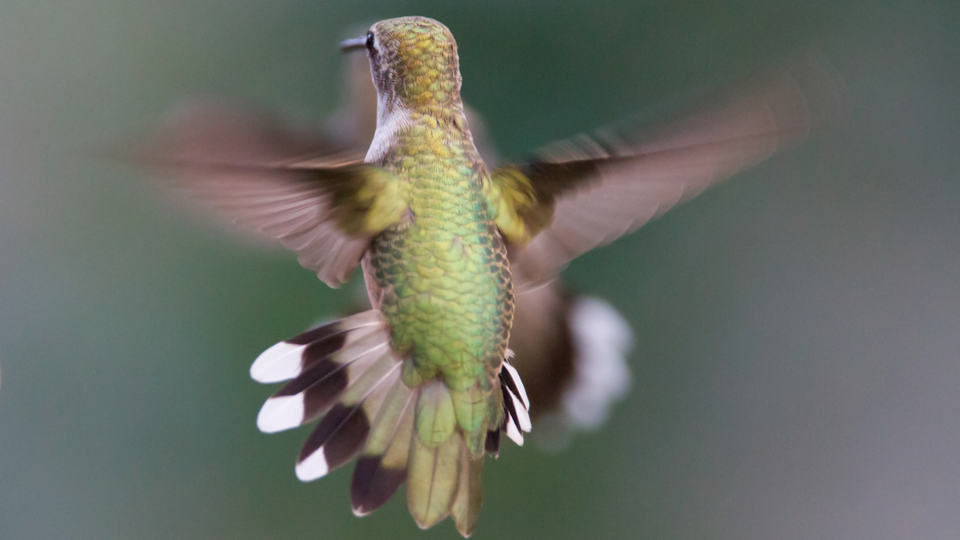Science News
Steady Flight

As humans, we’ve conquered flight, but we’ve yet to perfect it the way birds and insects have. After all, they’ve had millions of years of evolution; we’ve merely had a hundred or so years of human invention. Scientists are trying to make up for lost time by studying the way birds and insects achieve their incredible flying dynamics. We examined some of those studies in a video last year, and now two new studies—that focus on hummingbirds, which can not only fly, but hover—further refine the details of flight.
David Lentink of Stanford looks at flight through high-speed videos and other techniques. (We used some of his footage in the video referenced above.) For his recent study, he focused on the wing aspect ratio—the wing’s length relative to its chord, or variable width.
Manmade wings—think airplanes and helicopters—have a high wing aspect ratio—longer length relative to width, or long and slender wings (or blades). But birds and insects have low wing aspect ratio—short and stubby wings. For the manmade wings, the high aspect ratio works well in most cases. When the wings are more or less parallel with the ground, and especially when they rotate or glide, they are incredibly efficient. At more aggressive angles, however, the airflow over the wing becomes unstable, separating from the surface, and flight can stall.
Nature’s low aspect ratio overcomes this issue. “Scientists have long observed how these animals’ wings allow them to hover or fly very slowly, and even avoid stalling when beating at a steep angle of attack, but how they manage to do so has remained a complicated mystery,” Lentink says.
So how do the animals keep steady and efficient in air? Lentink and his colleagues examined wing types from several hummingbird species—from the two-inch-long bee hummingbird to the eight-inch giant hummingbird—as well as a selection from insects to large birds. The team determined that there’s a sweet spot for stability: a wing aspect ratio of four. Beyond that, the wing stalls. Interestingly, this might be why most hummingbirds—as well as the majority of insects, bats and other birds—naturally have aspect ratios between three and four.
“More research with flapping wings is needed, but this finding points toward a remarkable example of evolutionary convergence,” Lentink says. “It can also explain the big divide between engineering and biological wing design.” He says this work could be instrumental in designing quadcopters that need to be able to hover or fly slowly in turbulent air. Blades with an aspect ratio similar to the hummingbird should be more stable in gusty winds, and they will require less power to keep the blade spinning.
The research is published in the Journal of the Royal Society Interface, and you can read more about it (and watch a video) on the Stanford website.
Another study, this one published in the Journal of Experimental Biology, also looks at how hummingbirds remain stable in gusts of wind. Again, using high-speed video, that team of researchers examined hummingbirds in a wind tunnel to understand the mechanics. They found that while the head will remain stable in a variable strong wind, the body moves and adjusts quickly. According to the study, “The hummingbirds mitigated these disturbances by increasing mean wing stroke amplitude and stroke plane angle, and by varying these parameters asymmetrically between the wings, and from one stroke to the next. They also actively varied the orientation and fan angle of the tail.”
The team hopes that these findings could improve drone design. More details, plus a video, are available at the New York Times.
Where will the science of flight take us next?
Image: Dan Pancamo/Wikipedia